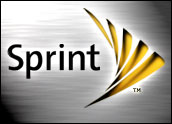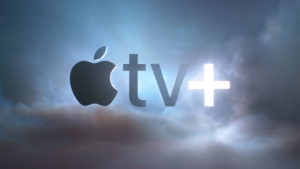
Mobile carrier Sprint Nextel reported deep losses amounting to US$863 million in the first quarter of this year, but the company’s results actually beat Wall Street expectations. And since it began offering Apple’s iPhone as of last October, Sprint added a net 263,000 subscribers.
However, this has come at a price. To acquire the iPhone, Sprint agreed to a $15.5 billion deal with Apple to carry the handset over the next four years.
“Sprint is finally stocking the iPhone, and that is helping bring new customers,” said Ian Fogg, an analyst for IHS Screen Digest.
“The handset has been a key acquisition driver,” he noted. “Since it arrived on Sprint in Q4 of last year, the company has seen about 40 percent new customers, and this year in Q1 it saw another 44 percent of new customers switching to Sprint for the handset. It is giving the carrier a significant boost.”
Handsets alone won’t likely save the day for the carrier, which now lags a distant third behind Verizon and AT&T.
“Other carriers have succeeded and failed with the same handsets, so you can’t blame what handsets the carrier had,” said telecommunications analyst Jeff Kagan.
Sprint’s Disconnect
While the iPhone is helping lure consumers, the carrier is also trying to draw in smartphone subscribers with unlimited data usage packages. At present, neither AT&T nor Verizon Wireless is offering an unlimited data plan. However, Sprint’s network is slower than either of the big two, and that remains an issue.
“It is a problem, but here are a bunch of reasons that Sprint has lagged behind,” Fogg told the E-Commerce Times. “One of the big reasons is the decision by Sprint to go with WiMAX. They were at a point when it could’ve been a viable technology, but instead it was a cul-de-sac, and sent them down a blind alley. Sprint had sourced spectrum for this technology, and had sourced handsets, but the technology did not catch on.”
Now the company finds itself repositioning itself as LTE, added Fogg.
It is beginning to thin out the Nextel network and upgrade to 4G. This should not affect the service, as there are only a reported 5.4 million Nextel subscribers left — they account for just 10 percent of the overall number of Sprint Nextel customers — but this is forcing the company to once again play catch-up.
Reliability however has not been a factor.
“Every carrier has problems somewhere, so this isn’t about service reliability,” said Kagan. “Sprint has a good network; it did not expand as quickly as the others. Sprint still has good quality and a reliable network in the major markets.
An Increasingly Distant Third
What is clear at this point is that the so-called big three aren’t really the big three. Although there had been a big four — AT&T, Verizon, Sprint Nextel and T-Mobile — the former two have left the latter two lagging behind.
“What we’re really looking at are two big players now,” Kagan told the E-Commerce Times.
Last year, AT&T’s attempted acquisition of T-Mobile collapsed, but this does not mean other mergers are off the table.
“It is hard to say how this will play out,” said Kagan. “We thought T-Mobile and Sprint were going to get together, but that didn’t happen. Then AT&T was looking at T-Mobile, but that didn’t get approved. So it is hard to tell what will happen next in the mobile space.”
And Then There Were Two?
A possible merger between Sprint and T-Mobile would have to overcome and address significant issues, notably that the two carriers use very different bandwidth technologies.
“It would be possible, but it probably would give neither company what they really need,” added Fogg. “While there would be operational benefits, in the end it presents too many challenges.”
Instead there are actually a few small regional carriers that Sprint could work with — or even acquire — and these companies use CDMA technology that is broadly similar with that used by Sprint.
“However, even in this scenario the company would still lag behind AT&T and Verizon,” said Fogg.
Calling a Lifeline
Sprint still likely has a lifeline left. The company may be a second-tier carrier, but the mobile space continues to change and evolve.
“There could be a merger or acquisition,” said Kagan, “but AT&T and Verizon are so far ahead that Sprint is really at the top of tier two. But it is a very different market every five years, and the question is who’s going to lead in the next five years? Wireless is going to continue to change, and we’re going to see the industry transform.”
Being different could be how Sprint sprints back to being a top player.
“Sprint has done a few things already that are helping turn things around,” said Fogg. “One of them is working with Google and providing Google Voice on its handsets. This technology was blocked at the Apple Store, or basically not approved. To use Google Voice essentially requires an Android phone, and Sprint has partnered with Google.”
The other area could be diversifying into other industries.
“Sprint is a big player in mobile healthcare,” added Kagan. “The company is doing a good job to grow its business by branching out into other industries, and at present AT&T and Verizon are not as heavily invested.”
Sprint did not respond to our request to comment for this story.





















































Social Media
See all Social Media